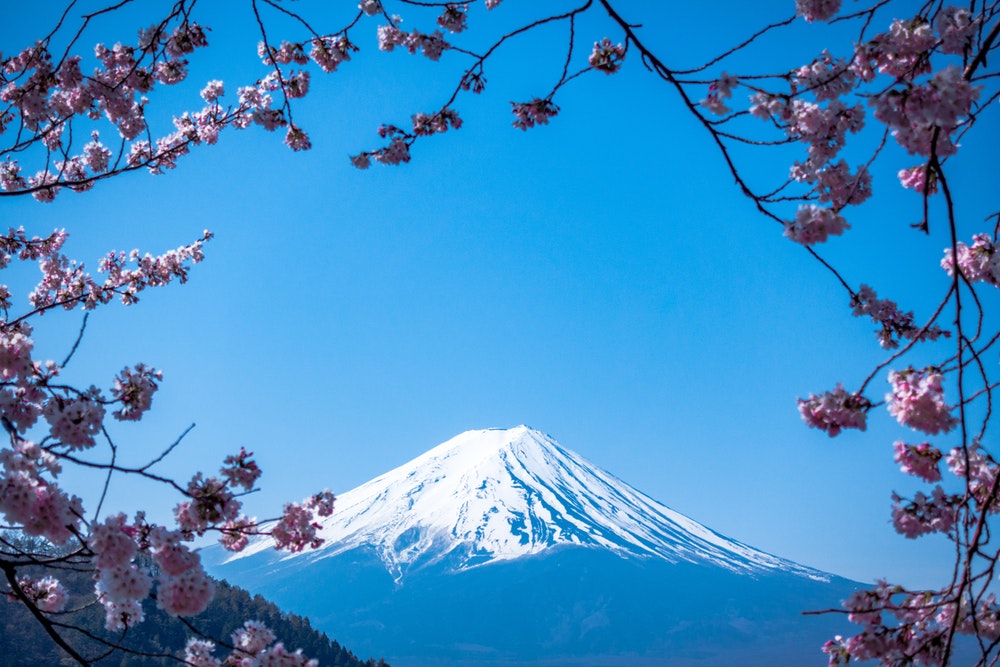Japan never runs out of beautiful things to see and fun things to do. Whatever time of the year you decide to visit, the shrines and temples, castles and gardens, restaurants and bars, theme parks and onsen towns, and other tourist spots will always have something exciting and interesting to offer that will make your trip memorable.
Overview on Japan’s Climate
Japan’s weather and climate conditions vary as you go farther north or south. The majority of Japan lies on the temperate zone and has a humid subtropical climate, while its northernmost island, Hokkaido, has a cool humid continental climate, and the southern islands have a warm tropical rainforest climate.
- In the Hokkaido region, summers tend to be cool and winters are long and chilly.
- Around the Sea of Japan, winters see heavy snowfall, and the summers have less than average rainy days.
- In the Central Highland region, summers are hot and humid, and winters are moderately cold.
- Around the Seto Inland Sea, weather is mild and pleasant most of the year.
- For regions by the Pacific Ocean, many days of the year are sunny and humid, and winters are mild.
- The Ryukyu Islands have hot summers and warm winters in the south, milder conditions in the north, and are generally prone to typhoons.
Seasons in Japan

Japan has four seasons — spring, summer, autumn, and winter. However, the daily temperatures, amount of rainfall and snow, humidity levels, and other conditions fluctuate significantly as you go north or south. Even the peak times for cherry blossoms and autumn leaves also differ from region to region.
Spring
Spring time is a favourite of a lot of tourists because it is when the pink cherry flowers bloom and transform the many different gardens and parks across the country into a breathtaking sight. It is great for all sorts of outdoor activities because the temperatures are mild, usually around 10 to 15 degrees Celsius in the north and around 20 degrees Celsius in the south, and a jacket or sweater is enough if going out for some sakura viewing.
Most of Japan welcome the peak cherry blossom season around late March to early April, but Hokkaido sees it in the last couple of weeks of April, and Okinawa has it from as early as mid-January.
Summer
Summer days in Japan are known to be very hot and humid, and temperatures can go to the high 30s Celsius. So, wearing clothes made of cotton and other light materials is advised. When going out, make sure to bring liquids with you, and maybe a hat, an umbrella, or a foldable fan to help cool you down. However, despite the scorching hot and very humid days, summer remains to be a popular time to visit Japan.
From June to August, the country observes many of the biggest festivals and events that attract local and international visitors.
In Kyoto, the Gion Festival is celebrated the whole month of July, and from July 14 to 17, you can catch the event’s highlights, including a parade of large, beautifully-adorned floats, known as the Yamaboko Junko. In Osaka, there is the Tenjin Matsuri, a boat festival held from July 24 to 25, and features more than 3,000 performers wearing traditional Japanese garb and carrying portable shrines around the city. In Tokyo, on the last Saturday of July, there is the Sumidagawa Fireworks Festival, which showcases a big and colorful fireworks display by the Sumida riverbank in Asakusa.
Autumn
The beginning of the autumn season, around September and early October, is usually riddled with typhoons. However, the weather becomes cooler, drier, and more pleasant after that, with temperatures between 10 to 20 degrees Celsius, and offers excellent opportunities to enjoy autumn foliage viewing and other outdoor activities.
The Hokkaido region experiences the changing of colors earlier than the rest of the country. Once September kicks in, the trees begin to turn red and yellow, and parks, gardens, and other autumn foliage viewing spots all over the region transform into enchanting places covered in red and yellow canopies. In Tokyo, Kyoto, and other parts of the country, the leaves do not begin changing colors until around late November.
Winter
Winters in Japan can be quite cold and chilly, particularly in Hokkaido and the mountains, with temperatures dipping to below 0 degrees Celsius; or mild and pleasant, around 15 to 20 degrees Celsius, especially in the Kyushu region and the smaller islands.
From December to February, the whole of Japan is generally dry, and there are numerous winter illuminations, mostly in the cities. Certain tourist attractions, such as Shirakawa-go and Mount Koya, look a lot more amazing in winter, as their old buildings and grounds are covered and surrounded by white snow. This is also the best time to go skiing at any of the resorts in the Nagano or Hokkaido areas.
Winter time is also a low-peak tourist season, so if you do not like crowds, and want to avail of cheaper accommodation and flight prices, look into doing your trip this time of the year.
Just remember to have the appropriate winter gear ready to keep you warm and comfortable. Bring a winter jacket, layers of warm clothing, gloves, hats, and scarves, and wear waterproof shoes with good grips to avoid slipping on icy ground.
The Best Time to Visit Japan
The answer to when the best time to go visit Japan is entirely dependent on you —- your budget, what you want to do, what you want to see, and how comfortable you are with certain weather conditions.
If you want to see gorgeous sakura flowers in full bloom or the tantalizing colors of autumn leaves, look up sakura or autumn foliage forecasts online. Make sure to book accommodations several months in advance, as these months tend to get sold out real quick. If you are wary of cancelled or delayed flights due to typhoons, reconsider going in late summer.
Some research before leaving for your Japan trip will help you tremendously in making the most out of your vacation.
